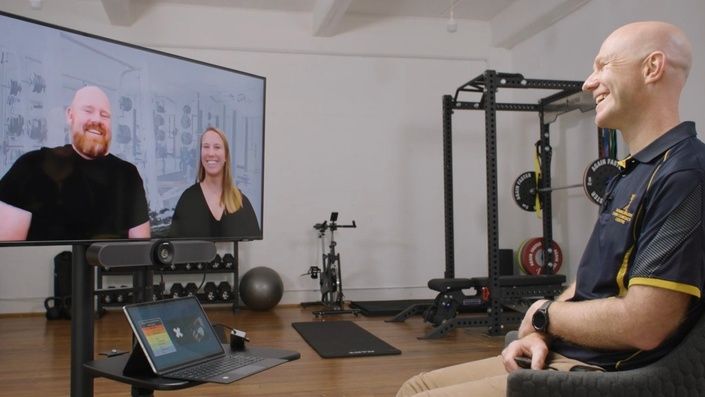Introduction
The Prevent to Perform in Football Masterclass, taught by Dr Matt Whalan and Dr Stella Veith, provides a complete distillation of injury prevention in football, from injury screening to evidence-based programs, and everything in between. This position statement provides clinically relevant, actionable information that may be useful to health professionals..
Part 1: Injury Frameworks, Surveillance & Risk:
Recording, analysing then preventing injuries is often perceived as a mountainous task, however with the right systems in place it becomes far more manageable. Whilst injuries are not linear and difficult to predict, understanding how the injury affected the athlete’s ability to participate, tracking ‘niggles’ and the location of injury are useful starting points.
- Injury surveillance (i.e., identifying and analysing the occurrence of various injuries) should be the foundation of injury prevention as it can guide your implementation of appropriate strategies.
- Physiotherapists have an important role to guide athletes regarding if they should play or participate in training.
- ‘Niggles’ or non-time loss injuries (e.g., soreness, ‘tightness’) are a risk factor for time loss injuries.
Part 2: Factors and Considerations for Injuries
Injuries are multifactorial and greatly differ between the sexes, age, sports and more. We must also recognise that there are many different types of loads that can lead to injury, making it very difficult to fully understand why an injury occurs. Understanding your athletes, their sport and their lives is vital to best monitor their injuries, then apply appropriate injury prevention strategies.
- Load monitoring should not be used to predict injuries; however, it should encompass and consider physical, mental, and social loads, both at training and away from the club.
- Women are not small men; they have different injury profiles, are affected by different social, physical, and contextual factors, and therefore injury prevention strategies for men don’t necessarily carry across to women in the same way.
- Youth athletes are also in their own sub-category; they have different injuries to adults, whilst it is also important to encourage kids to play a variety of sports and not specialise too early.
Masterclass Preview
There are many exercises that can be used to reduce the risk of injury in your athletes.
Enjoy this free preview of what Injury Prevention experts Matt Whalan and Stella Veith would use to help reduce the risk of injury in their Football athletes.
Part 3: Application of Injury Prevention
Injury prevention can be split into a) primary, b) secondary and c) tertiary programs. Primary programs such as Perform+ should be implemented across entire teams to try and prevent injuries before they occur. Secondary prevention focusses on stopping small problems becoming larger problems, by tracking and analysing various factors including sleep, physical load, and nutrition. Lastly, tertiary injury prevention is for those who are currently injured and should give alternatives to exercises to allow players to unload to a safe level.
- Injury screening is not very effective at predicting who gets injured; rather than trying to identify individuals who are at risk of injury, it is probably better to apply injury prevention strategies to all of your athletes.
- Injury prevention programs such as the Perform+ are effective at reducing the incidence of injury, however these programs should be easily implementable into the team’s routine and schedule by making them easy to apply and understand.
- The keys to injury prevention are ensuring players have been exposed to “enough” (e.g., volume, speed, strength), are “competent” (e.g., in movement and technique) and are “ready” (e.g., happy, healthy, and recovered).
Part 4: Injury Prevention Programs
Historically, injury prevention programs have had poor compliance. Common reasons for this include the difficulty in applying the program due to factors such as time limitations and failing to understand the purpose of the program. Physiotherapists should focus on incorporating sport- specific skills into the program, using strategies to reduce the time required to implement the exercises, and educate teams about the wider benefits of injury prevention.
Injury prevention programs should be pitched to coaches, teams, and individuals by emphasising reasons such as improvements in player availability, improved performance, the ability to intertwine skills within the program and advocating that professional clubs regularly engage in injury prevention.
Application of injury prevention programs must align with the stage of the season, with a focus on higher loads and building capacity in the offseason, maintaining these improvements but progressing to maximal reps and sets in the preseason, then focussing on purely maintenance with just 1-2 sessions of preventative exercises per week during the season.
Physiotherapists and coaches should modify each exercise so that it is at an appropriate level for each athlete, whilst ensuring their technique is sound throughout.


